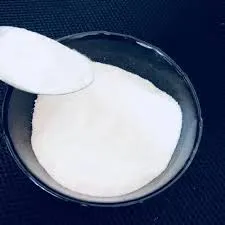
Oct . 10, 2024 17:03 Back to list
MHEC Production and Applications in the Chemical and Construction Industries
The Role of Methyl Hydroxyethyl Cellulose in Modern Industries
Methyl Hydroxyethyl Cellulose (MHEC) is a versatile and essential polymer derived from cellulose, which has found extensive application in various industries thanks to its unique properties. This water-soluble ingredient is synthesized by the chemical modification of cellulose, a natural polymer obtained from plant sources. The manufacturing process involves the reaction of cellulose with methyl chloride and ethylene oxide, resulting in a product that holds significant advantages for industrial use.
One of the most notable characteristics of MHEC is its thickening and stabilizing properties. This makes it an invaluable ingredient in formulations within the construction industry, particularly in cement-based products such as mortars and plasters. When added to these mixtures, MHEC improves workability and enhances the adhesion of the materials, allowing for a smoother finish and better durability. Furthermore, it contributes to the retention of water in the mixture, which is crucial for proper curing and strength development.
In the realm of the paint and coatings industry, MHEC is widely used for its ability to modify the rheological properties of water-based paints. It provides desired viscosity levels, enabling easier application and improved spreadability. Moreover, MHEC acts as a stabilizer, preventing the sedimentation of solid components in the formulation. This not only enhances the aesthetics of the paint but also increases its shelf life, making it more appealing to manufacturers and consumers alike.
In the food industry, MHEC serves as an effective emulsifier and stabilizer. It is commonly used in the formulation of sauces, dressings, and dairy products, where it helps maintain a consistent texture and prevents the separation of ingredients. The food-grade MHEC is recognized for its safety and is approved by various health organizations, ensuring it meets the necessary regulatory standards.
mhec-methhyl hydroxyethyl cellulose factory

The pharmaceutical sector also reaps the benefits of MHEC, particularly in drug formulations. Its properties as a binder and film-forming agent make it ideal for the production of controlled-release tablets. By modifying the release rates of active ingredients, MHEC plays a crucial role in improving the bioavailability of medications.
Furthermore, the cosmetic industry has found MHEC useful as a thickener and stabilizer in creams, lotions, and gels
. Its ability to enhance the texture and provide a smooth application experience makes it a preferred choice among formulators looking to create high-quality skincare products.As the demand for sustainable and eco-friendly materials continues to rise, the significance of MHEC becomes even more prominent. Being derived from natural cellulose, MHEC aligns with the growing emphasis on renewable resources and environmentally conscious manufacturing processes.
In conclusion, Methyl Hydroxyethyl Cellulose is more than just a chemical compound; it is a critical ingredient that influences the quality and performance of a wide array of products across multiple industries. Its versatile nature, coupled with its effectiveness, underscores the importance of MHEC in modern manufacturing and formulation processes, making it a cornerstone of industrial innovation. As research continues to evolve, the potential applications of MHEC are likely to expand further, reaffirming its status as a vital component in the global market.
-
Versatile Hpmc Uses in Different Industries
NewsJun.19,2025
-
Redispersible Powder's Role in Enhancing Durability of Construction Products
NewsJun.19,2025
-
Hydroxyethyl Cellulose Applications Driving Green Industrial Processes
NewsJun.19,2025
-
Exploring Different Redispersible Polymer Powder
NewsJun.19,2025
-
Choosing the Right Mortar Bonding Agent
NewsJun.19,2025
-
Applications and Significance of China Hpmc in Modern Industries
NewsJun.19,2025







